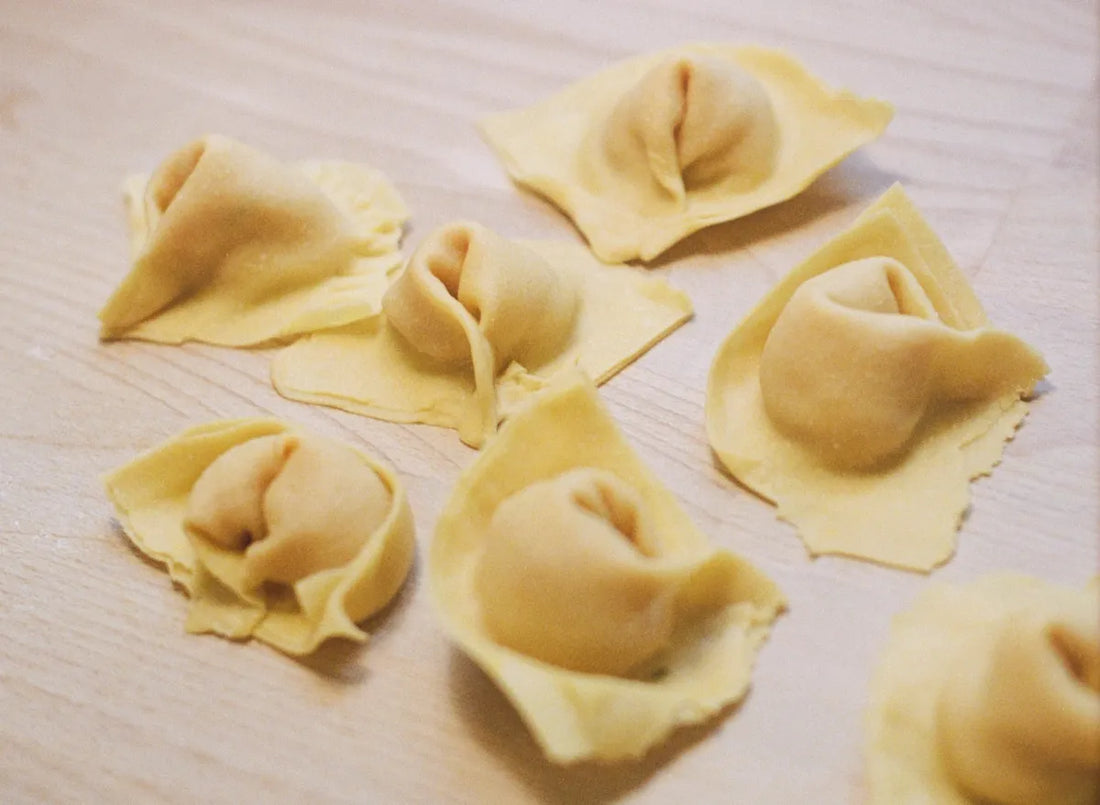Chiara Righetti is fluent in pasta and has built up her extensive knowledge from working in restaurants. After a decade in London, you can now find her creations at Mangia and Circolo in Copenhagen. For Recreation, she's chosen a recipe that is typical for the Italian town she is from, Ferrara - and it's in season! Ideally, you get your hands on an Italian variation of pumpkin, Violina.
For the filling
- Pumpkin (Violina)
- 40% Parmigiano (24 months or 30 months, the saltier the better)
- Grated nutmeg
- Salt & pepper
- Herbs (rosemary and sage works are pumpkin's best friends)
For the pasta
- 1 M/L egg pr. guest (an unwritten rule followed by Chiara since her grandmother taught her how to do this dish)
- 100 grams of flour '00' pr. egg
Steps
1. Cut your pumpkin and roast it in the oven (180 degrees Celcius). Add some herbs! Every pumpkin is different in size, but let's say at least 45 minutes. As a rule of thumb, the edges should be caramelized and the meat should be so soft that you can scoop it out of the skin with a spoon. You can test the softness of the pumpkin with a toothpick.
2. Let your pumpkin sit until it reaches room temperature - it should not get cold as it's easier to handle while it's warm. Discard the herbs and incorporate the grated nutmeg and grated parmigiano, season it with salt and pepper and taste it along the way. If you need to get your hands in there, do it! The filling gets better if it's allowed to rest for a couple of hours or better yet - overnight in the fridge.
3. Now it's time to crack on to your pasta. If you don't have a stand in mixer, drop the flour on a wooden surface. Make a well and drop your eggs in and start whisking your eggs with the flour until you can knead it by hand. It should become a bright smooth and sexy yellow dough. (Tip: Keep out some of the flour, because you can always add more if the dough is too soft. Pro tip: If you think your dough is too hard, wash your hands with water (only!) and don't dry them, go straight back to kneading your dough - the moisture in your hands should help.)
4. Let it rest. That's a must. Go have a glass of wine while you leave your dough in a sealed plastic bag in the fridge for at least 30 minutes (which in the grand scheme of things is not a long time)
5. Rolling pin or pasta machine? That's the question now! The answer is that it's completely up to you. Pull the dough thin, but not too thin (important for filled pasta like this one).
6. Cut your pasta into squares; go big with a 10 by 10 cm. Put a dollop of filling in the centre, aim to fill the cappellacci as much as possible while still being able to close them neatly. Start by by folding it diagonally first (making sure you let any air escape). Next, pull the two opposite corners together and firmly seal. Make a crease as you would with tortellini and simply join the two long sides by pressing them together. It's harder said than done!
7. When you’ve closed them all, drop ‘em in a pot of salted boiling water, let them raise to the top, but keep them there for 30 extra seconds and move them into a pan where you’ve melted some salted butter & sage leaves; don’t let your butter turn brown, create a quick emulsion by adding half a ladle of cooking water to it and turn your stove off after dropping your pasta in it!
8. Plate, grate some parmigiano on top and it’s done - Autumn on a plate.
Buon Appetito!









